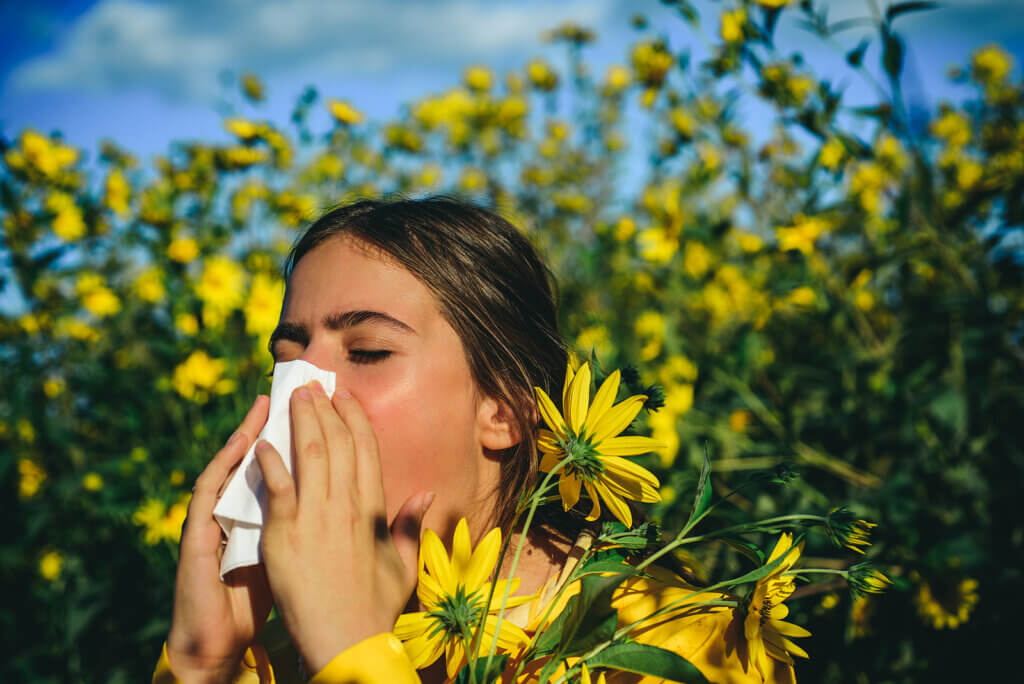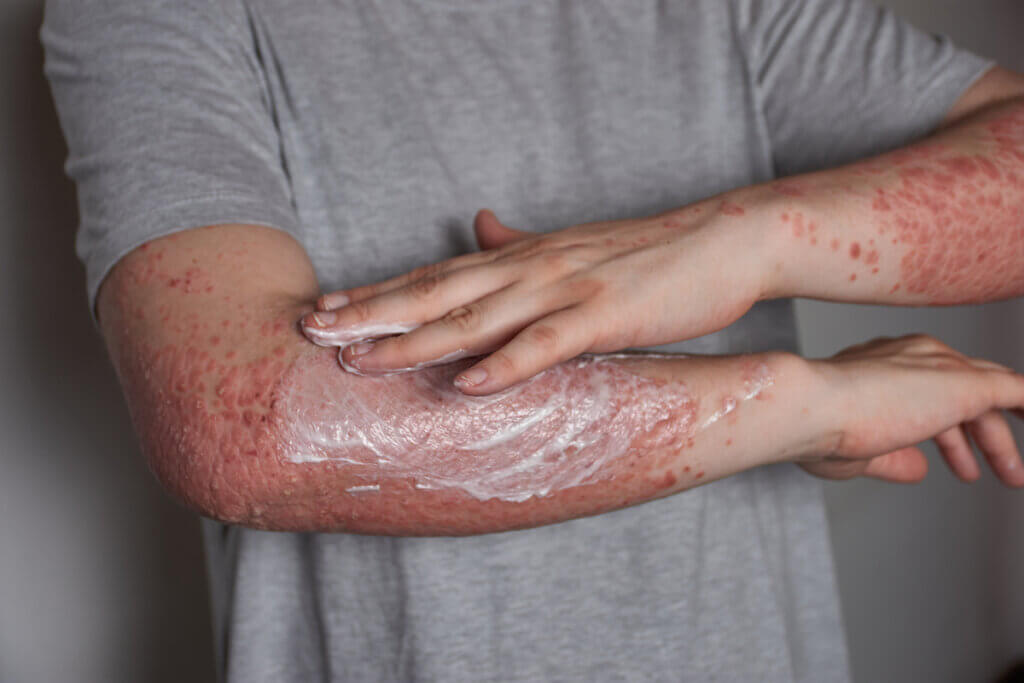Treatment of Allergies

Allergies are a group of conditions in which the immune system reacts abnormally to external substances. The triggers can be certain foods, animals, materials, and plants. The treatment of allergies differs from case to case.
Despite the latter, many types of allergies share common therapies. What varies is the frequency or dose delivered. Here’s a general summary of the most commonly used treatments.
Lifestyle as an allergy treatment
Allergies are produced by the body’s interaction with triggers. The more that you’re exposed to the catalysts, the more episodes you’ll experience.
This is why lifestyle is a central part of allergy treatment. There are many options for you to consider. The Australasian Society of Clinical Immunology and Allergy (ASCIA) recommends the following:
- Wash comforters, pillowcases, sheets, and blankets weekly to reduce interaction with mites and dust.
- Consider buying special mite repellent covers for your bed.
- Remove cotton-filled toys from the main room.
- Eliminate plush rugs.
- Keep your residence clean to avoid dust accumulation.
- Plan a balanced, trigger-free eating plan with a nutritionist.
- Reduces moisture build-up in places prone to mold growth.
- In spring periods keep windows closed to keep pollen away from your home.
- Take pets out of your bedroom and groom them frequently.
- Wash your hands regularly.
- Wear sunglasses and keep the air conditioner on during pollen seasons.
These are the basic tips that you should include in your day-to-day life. On the other hand, as part of allergy treatment, the Asthma and Allergy Foundation of America also suggests keeping a record of possible symptom triggers, in order to avoid them in the future.

Pharmacological treatment of allergies
Lifestyle is an irreplaceable part of allergy treatment. However, it alone isn’t enough to keep episodes in check. A variety of drugs are used for this.
Nasal corticosteroids
Also known as aerosol corticosteroids, they’re used to reduce the inflammation of the lining of the nose. It’s a fast and effective treatment in moderate or severe cases.
Studies in this regard indicate that there are no major differences between brands and that side effects are minimal. However, depending on the dose, you may experience irritation and dysphonia.
These types of products must be used appropriately in order to take advantage of the effects. For those who only develop mild episodes, excessive therapy can result.
Antihistamines
As the name implies, antihistamines are used to block the effects of histamine. This is a hormone that your body secretes from allergic reactions.
The intake of these drugs is carried out to treat or prevent symptoms, regardless of the intensity with which they develop. Most of them can be purchased without a prescription.
Medications of this type should be used with caution, as their use is associated with a certain sedative effect. This occurs with the so-called first-generation antihistamines, such as promethazine.
Today, experts suggest the use of second-generation antihistamines, because this side effect is minor. Among them, we can highlight loratadine and cetirizine.
These drugs come in a variety of forms: tablets, capsules, sprays, nasal drops, injections, and eye drops. Consult with your specialist if the main side effects are interrupting any of your daily tasks (driving, for example).
Mast cell stabilizers
Mast cell stabilizers also stop histamine production, but through a different mechanism. Its most used formats are eye drops and nasal sprays.
They can very effectively relieve puffiness, nasal congestion, and watery eyes. Evidence indicates that they’re safe for treating allergies, although they can be more expensive and require frequent administration.
The most widely-used drug in this group is disodium cromoglycate. The Spanish Agency for Medicines and Health Products indicates that the possible side effects after ingestion are sneezing, accompanied by irritation, nausea, and headaches.
Decongestants
Decongestants are used as a temporary treatment, usually under applications that don’t exceed 3-5 days. The Food and Drug Administration (FDA) warns that their abuse, specifically propylhexedrine, is linked to the development of heart conditions, mental disorders, and even death.
Because of this, this therapy should be used only to temporarily decongest the nose. It’s recommended in mild cases for patients who have an occasional flare-up.
Creams and ointments
If the allergic reaction causes an outbreak or skin reaction, then creams and ointments can be used to counteract it. Most include corticosteroids as the active ingredient, although others may also be included.
If you use the creams for several days and you don’t perceive any improvement, then suspend their use and consult with the specialist so that they can suggest a more personalized treatment. When you abuse this cream, thinning of the skin and stretch marks can appear.

Other allergy treatments
In addition to the options presented, there are others that only apply to some patients. We’re talking here talk about epinephrine injections and immune therapy.
Epinephrine
Epinephrine is a self-injectable drug used to treat anaphylaxis. This is only one of its uses, as it has also been approved for septic shocks that cause hypotension and for maintenance of mydriasis in intraocular surgeries.
Its application can prevent fatal complications from severe allergic reactions. Contrary to popular belief, not all allergy sufferers this substance.
It should be administered with caution, and you should consult a specialist to assess the possibility of always carrying a dose in your bag. Researchers have reported the following side effects:
- Anxiety
- Nausea and dizziness
- Tremors and weakness
- Headaches
- Dyspnoea
- Hyperglycemia and hypokalemia
- Chest pain
- Hypertension
In addition to this, it can react negatively in the presence of other drugs. For example, alpha-adrenergic blockers, various antihypertensives, vasodilators, diuretics, and monoamine oxidase inhibitors. Epinephrine can save lives, but consult an allergist before purchasing it as a preventive method.
Immune therapy
Immunotherapy aims to desensitize your body to triggers. Two options are used for this: allergy shots and sublingual immunotherapy. This is a long-term approach that can take years to complete.
Neither is it useful for all types of allergies. For example, the results are less encouraging in patients with food allergies or hives. Instead, it seems to be more useful against allergies to pollen, pets, asthma, and bee stings.
Despite the fact that it’s a safe therapy with a high percentage of effectiveness in the cases reviewed, the researchers point out that it’s only used in 10% of patients. Consult with your specialist about the feasibility of starting treatment of this type and the possible results.
Allergy treatment is personalized
There’s no single treatment for allergies quite simply because there are so many types of allergies. Each patient needs to be evaluated in context, and according to the allergens that trigger the symptoms.
Topical presentations and oral tablets aren’t always helpful. It will depend on the specialist and what they consider appropriate, depending on the severity.
Allergies are a group of conditions in which the immune system reacts abnormally to external substances. The triggers can be certain foods, animals, materials, and plants. The treatment of allergies differs from case to case.
Despite the latter, many types of allergies share common therapies. What varies is the frequency or dose delivered. Here’s a general summary of the most commonly used treatments.
Lifestyle as an allergy treatment
Allergies are produced by the body’s interaction with triggers. The more that you’re exposed to the catalysts, the more episodes you’ll experience.
This is why lifestyle is a central part of allergy treatment. There are many options for you to consider. The Australasian Society of Clinical Immunology and Allergy (ASCIA) recommends the following:
- Wash comforters, pillowcases, sheets, and blankets weekly to reduce interaction with mites and dust.
- Consider buying special mite repellent covers for your bed.
- Remove cotton-filled toys from the main room.
- Eliminate plush rugs.
- Keep your residence clean to avoid dust accumulation.
- Plan a balanced, trigger-free eating plan with a nutritionist.
- Reduces moisture build-up in places prone to mold growth.
- In spring periods keep windows closed to keep pollen away from your home.
- Take pets out of your bedroom and groom them frequently.
- Wash your hands regularly.
- Wear sunglasses and keep the air conditioner on during pollen seasons.
These are the basic tips that you should include in your day-to-day life. On the other hand, as part of allergy treatment, the Asthma and Allergy Foundation of America also suggests keeping a record of possible symptom triggers, in order to avoid them in the future.

Pharmacological treatment of allergies
Lifestyle is an irreplaceable part of allergy treatment. However, it alone isn’t enough to keep episodes in check. A variety of drugs are used for this.
Nasal corticosteroids
Also known as aerosol corticosteroids, they’re used to reduce the inflammation of the lining of the nose. It’s a fast and effective treatment in moderate or severe cases.
Studies in this regard indicate that there are no major differences between brands and that side effects are minimal. However, depending on the dose, you may experience irritation and dysphonia.
These types of products must be used appropriately in order to take advantage of the effects. For those who only develop mild episodes, excessive therapy can result.
Antihistamines
As the name implies, antihistamines are used to block the effects of histamine. This is a hormone that your body secretes from allergic reactions.
The intake of these drugs is carried out to treat or prevent symptoms, regardless of the intensity with which they develop. Most of them can be purchased without a prescription.
Medications of this type should be used with caution, as their use is associated with a certain sedative effect. This occurs with the so-called first-generation antihistamines, such as promethazine.
Today, experts suggest the use of second-generation antihistamines, because this side effect is minor. Among them, we can highlight loratadine and cetirizine.
These drugs come in a variety of forms: tablets, capsules, sprays, nasal drops, injections, and eye drops. Consult with your specialist if the main side effects are interrupting any of your daily tasks (driving, for example).
Mast cell stabilizers
Mast cell stabilizers also stop histamine production, but through a different mechanism. Its most used formats are eye drops and nasal sprays.
They can very effectively relieve puffiness, nasal congestion, and watery eyes. Evidence indicates that they’re safe for treating allergies, although they can be more expensive and require frequent administration.
The most widely-used drug in this group is disodium cromoglycate. The Spanish Agency for Medicines and Health Products indicates that the possible side effects after ingestion are sneezing, accompanied by irritation, nausea, and headaches.
Decongestants
Decongestants are used as a temporary treatment, usually under applications that don’t exceed 3-5 days. The Food and Drug Administration (FDA) warns that their abuse, specifically propylhexedrine, is linked to the development of heart conditions, mental disorders, and even death.
Because of this, this therapy should be used only to temporarily decongest the nose. It’s recommended in mild cases for patients who have an occasional flare-up.
Creams and ointments
If the allergic reaction causes an outbreak or skin reaction, then creams and ointments can be used to counteract it. Most include corticosteroids as the active ingredient, although others may also be included.
If you use the creams for several days and you don’t perceive any improvement, then suspend their use and consult with the specialist so that they can suggest a more personalized treatment. When you abuse this cream, thinning of the skin and stretch marks can appear.

Other allergy treatments
In addition to the options presented, there are others that only apply to some patients. We’re talking here talk about epinephrine injections and immune therapy.
Epinephrine
Epinephrine is a self-injectable drug used to treat anaphylaxis. This is only one of its uses, as it has also been approved for septic shocks that cause hypotension and for maintenance of mydriasis in intraocular surgeries.
Its application can prevent fatal complications from severe allergic reactions. Contrary to popular belief, not all allergy sufferers this substance.
It should be administered with caution, and you should consult a specialist to assess the possibility of always carrying a dose in your bag. Researchers have reported the following side effects:
- Anxiety
- Nausea and dizziness
- Tremors and weakness
- Headaches
- Dyspnoea
- Hyperglycemia and hypokalemia
- Chest pain
- Hypertension
In addition to this, it can react negatively in the presence of other drugs. For example, alpha-adrenergic blockers, various antihypertensives, vasodilators, diuretics, and monoamine oxidase inhibitors. Epinephrine can save lives, but consult an allergist before purchasing it as a preventive method.
Immune therapy
Immunotherapy aims to desensitize your body to triggers. Two options are used for this: allergy shots and sublingual immunotherapy. This is a long-term approach that can take years to complete.
Neither is it useful for all types of allergies. For example, the results are less encouraging in patients with food allergies or hives. Instead, it seems to be more useful against allergies to pollen, pets, asthma, and bee stings.
Despite the fact that it’s a safe therapy with a high percentage of effectiveness in the cases reviewed, the researchers point out that it’s only used in 10% of patients. Consult with your specialist about the feasibility of starting treatment of this type and the possible results.
Allergy treatment is personalized
There’s no single treatment for allergies quite simply because there are so many types of allergies. Each patient needs to be evaluated in context, and according to the allergens that trigger the symptoms.
Topical presentations and oral tablets aren’t always helpful. It will depend on the specialist and what they consider appropriate, depending on the severity.
- Dalal, R., & Grujic, D. Epinephrine. StatPearls. 2021.
- Finn DF, Walsh JJ. Twenty-first century mast cell stabilizers. Br J Pharmacol. 2013 Sep;170(1):23-37.
- Jutel M, Agache I, Bonini S, Burks AW, Calderon M, Canonica W, Cox L, Demoly P, Frew AJ, O’Hehir R, Kleine-Tebbe J, Muraro A, Lack G, Larenas D, Levin M, Nelson H, Pawankar R, Pfaar O, van Ree R, Sampson H, Santos AF, Du Toit G, Werfel T, Gerth van Wijk R, Zhang L, Akdis CA. International consensus on allergy immunotherapy. J Allergy Clin Immunol. 2015 Sep;136(3):556-68.
- Petty DA, Blaiss MS. Intranasal corticosteroids topical characteristics: side effects, formulation, and volume. Am J Rhinol Allergy. 2013 Nov-Dec;27(6):510-3.
- Randall, K. L., & Hawkins, C. A. Antihistamines and allergy. Australian prescriber. 2018; 41(2): 41.
Este texto se ofrece únicamente con propósitos informativos y no reemplaza la consulta con un profesional. Ante dudas, consulta a tu especialista.







